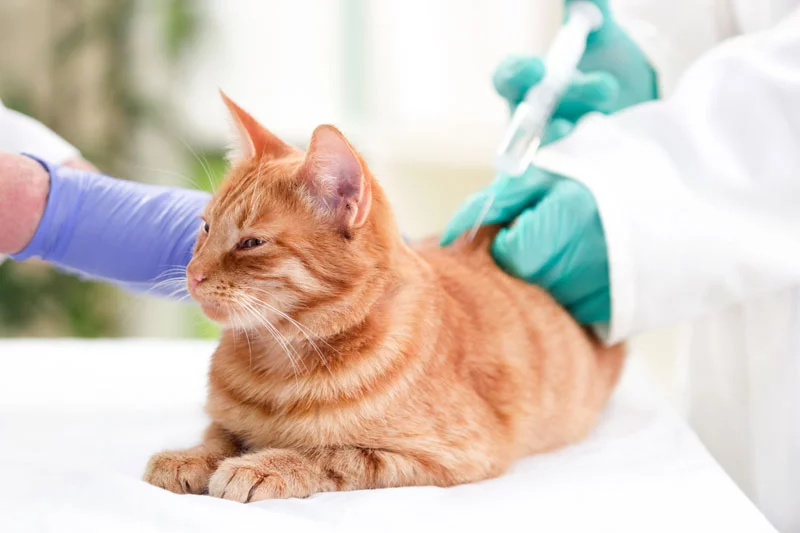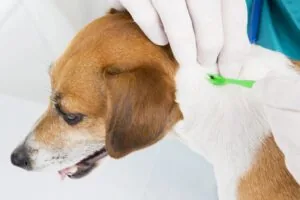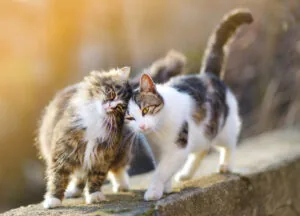What You Need to Know If Your Cat Has Diabetes Mellitus

What is Diabetes Mellitus?
Diabetes mellitus is a disease of the pancreas, a small organ located near the stomach. The pancreas has two different types of cells that have very different functions. One group of cells produces the enzymes necessary for proper digestion. The other group, called beta cells, produces the hormone insulin, which regulates the level of glucose (sugar) in the bloodstream and controls the delivery of glucose to the tissues of the body. In simple terms, diabetes mellitus is caused by the failure of the pancreas to regulate blood sugar. The clinical signs of diabetes mellitus are related to elevated concentrations of blood glucose and the inability of the body to use glucose as an energy source.
As with humans, there are two types of feline diabetes — insulin dependent, or type I, in which the body is no longer capable of producing any insulin, and non-insulin dependent, or type II, in which either the body can’t produce sufficient amounts of insulin, or the organs and tissues have become insulin-resistant, meaning that they need higher-than-normal amounts of insulin in order to properly process glucose. Occurrences of type I diabetes in cats is rare. Obesity is a predisposing factor in type II diabetes, which appears to be the most common type of diabetes in the cat.
How is Diabetes Mellitus Diagnosed?
Diabetes mellitus is diagnosed by the presence of the typical clinical signs (excess thirst, excess urination, excess appetite, and weight loss), a persistently high level of glucose in the blood, and the presence of glucose in the urine. The normal level of glucose in the blood is 80-120 mg/dl (4.4-6.6 mmol/L). It may rise to 250-300 mg/dl (13.6-16.5 mmol/L) following a large or high-calorie meal. However, diabetes is the only common disease that will cause the blood glucose level to rise above 400 mg/dl (22 mmol/L). Some diabetic cats will have a glucose level as high as 700-800 mg/dl (44 mmol/L), although most will be in the range of 400-600 mg/dl (22-33 mmol/L). To conserve glucose within the body, the kidneys do not filter glucose out of the bloodstream into the urine until an excessive level is reached. This means that cats with normal blood glucose levels will not have glucose in the urine. Diabetic cats, however, have excessive amounts of glucose in the blood, so it spills into the urine. Once blood glucose reaches 180 mg/dl or more, the excess is removed by the kidneys and enters the urine. This is why cats and people with diabetes mellitus have sugar in their urine (glucosuria).
Definitive confirmation of feline diabetes mellitus may require a specialized test called a serum fructosamine test.
Treatment
Many type II diabetic cats will respond to dietary changes—a low carbohydrate, high protein diet will allow adequate control for about 58% of cats. Of those still requiring insulin injections, being on this type of diet will help lower the dose of insulin needed to obtain control.
Chromium is a dietary supplement that may favor normalization of metabolism and is sometimes added into the regimen. Oral hypoglycemics are a class of drug often used for human diabetics. In cats, these drugs have variable efficacy and it can take up to a month to see improvement. A portion of cats do not respond and need insulin for relief. Most cats require longer acting insulin formulations, and sometimes, dose or formulation source may have to be adjusted before good control is achieved. A newer type of insulin called glargine is being used in a limited fashion but is not licensed for use in cats yet. Canned food is preferable to kibbles since making the kibble requires additional carbohydrates. Specific diets formulated by various pet food manufacturers, for example, provide excellent balance of protein and carbohydrates for afflicted cats.
Home monitoring of diabetic cats can be tailored to meet the needs of the particular patient, but recent evidence shows that using a small ear prick and a human glucose meter provides excellent blood glucose readings since the cat is less stressed in the home environment.
Make sure you know what to do if you administer insulin and the cat becomes weak and perhaps even collapses or has seizures. This can indicate low blood sugar and is an emergency. Karo syrup on the gums and a prompt trip to the veterinarian are indicated.
With proper care, a diabetic cat can live a relatively normal life.
Share This Post
Recent Posts
About Shallowford Animal Hospital
Shallowford Animal Hospital and The Pet Spa at Shallowford are dedicated to the exceptional, compassionate care your pet deserves. Pets hold a very special place in our families, and we treat yours like our own.



